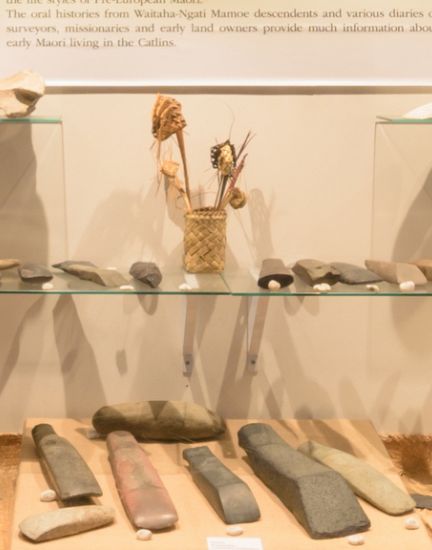
When the first Polynesians arrived in New Zealand about 1000 years ago they found a wonderful land that offered abundant sea and forest food sources.
They lived and travelled widely on both sea and land in the south (Te Wai Pounamu) travelling as far as Rakiura (Stewart Island) and inland to Central Otago in search of food, trade, cultural resources and social interaction. The remnant signs of their seasonal encampments are visible at the many midden (camp remains) sites in The Catlins. These are most common along the coast where some sites have been exposed by sea erosion.
The early Māori hunted many bird species including several of the moa species, kiwi, and seals and other sea food (kai moana). The dog (kuri) and the rat (kiore) that they brought with them had huge impacts on the native animal species in New Zealand, and possibly as many as 40 bird species disappeared.
Māori legends tell of the large, hairy monsters which inhabited the forested valleys of The Catlins. Their name was Maeroero, meaning “wild man of the forest” and they were feared by all Māori. Great chiefs of this southern coastline were Tuhawaiki, Taiaroa, and Karetai. Tuhawaiki was perhaps the most colourful character. He was based on Ruapuke Island in Foveaux Strait. He was nicknamed “Bloody Jack” and was known for his honesty and fair dealings.
Maori history is very rich in The Catlins and the many Maori place names are evidence of this. For Māori these place names remind them of who they are and where they have come from. In The Catlins today, Māori people of Waitaha, Ngati Mamoe and Ngai Tahu descent have ancestral and land-holding interest.